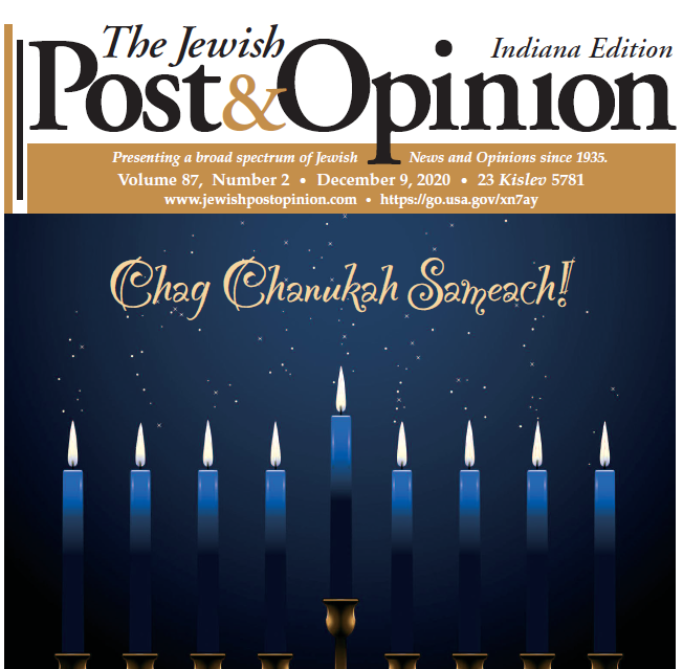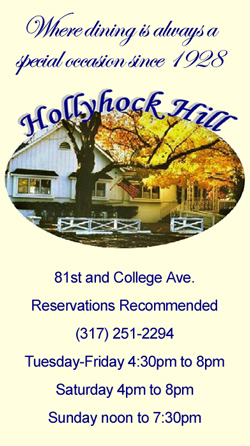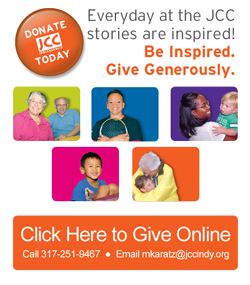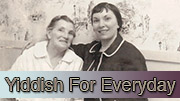September 25, 2013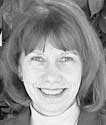
If your summer reading list included Witness to the Storm: A Jewish Journey from Nazi Berlin to the 82nd Airborne, 1920-1945 by Werner T. Angress (2012) or Children of the Holocaust: Conversations with Sons and Daughters of Survivors by Helen Epstein (Penguin Books, 1979), you might be a 2nd generation Holocaust survivor. If you live in the San Francisco Bay Area and attended all or most of the Holocaust-themed movies in the recent San Francisco Jewish Film Festival, you are no doubt a 2nd generation Holocaust survivor. If you are a member of the Facebook group, “Children of Holocaust Survivors” or if you’ve “liked” the “Children of Jewish Holocaust Survivors” page on Facebook, you’re probably a 2nd gen Holocaust survivor.[whohit]Educate to End Genocide[/whohit]
If your adult children accuse you of having raised the topic of the Holocaust at every family dinner while they grew up, you are probably 2nd gen. If they further accuse you of making Holocaust connections to every current event, every book and every class assignment that they had, then you are definitely “in.” Children can be so critical (sigh). Except for the Facebook connections, I am guilty of all of the above. I am a 2nd generation Holocaust survivor.
I admit that on my chest of drawers, which I do not share with my husband, stands a picture of the memorial statues at the Ravensbrück concentration camp in Germany. Ravensbrück was the “for women only” concentration camp, the scene of horrendous medical experiments and brutal torture.
Taken by award-winning photojournalist Ira Nowinski, the black and white picture of two women inmates reminds me daily of the many blessings I enjoy that were denied to a whole generation of Jewish women. Nowinski himself gave me the picture when his photo montage, “In Fitting Memory: The Art and Politics of Holocaust Memorials” was on display at the University of San Francisco when I was teaching there in the 1980s. The photos can be seen in a book with that title, text by Holocaust scholar Dr. Sybil Milton, z”l, former senior historian at the U.S. Holocaust Memorial Museum.
Since 1995, I have had the good fortune to teach a 15-week, three-unit course titled, “The Holocaust,” at Notre Dame de Namur University (NDNU) in Belmont, Calif. When I attend Holocaust education conferences in Jerusalem at Yad Vashem, the Israeli institution dedicated to Holocaust memory, education, and research, other educators express envy that I have so much time to devote to this sensitive curriculum.
As a former faculty administrator at NDNU, I know the importance of keeping curricula current and relevant and very much appreciate my stand-alone course on the Holocaust. Last year, with the blessing of my department chair, Dr. Judy Buller, I applied for and received a generous Faculty Development Grant from the University to record my guest speakers, all of whom are in their 80’s or 90’s.
Herman Shine is not only an Auschwitz survivor, but also one of the few who escaped from Auschwitz-Buna and survived. Read about Herman here: www.mercurynews.com/ci_19256055. Michael Franzblau, M.D., is an international expert on the Nazi abuses of medical practice. Browse to this link to read his discussion of Nazi doctors: www.mazal.org/archive/documents/Franzblau/Franzblau01/FRA01.htm. Rolf Beier is a former member of Hitler youth and the Wehrmacht, but came from a pacifist family. He married an American Jewish woman shortly after the war and in 2001 at the age of 79, became a Jew by choice. You can read his story here: www.jweekly.com/article/full/26983/german-who-fought-for-hitler-happier-man-as-a-jew/.
These have been my guest speakers for at least the last five years. It is humbling that for 18 years, student feedback has been almost universal that the best thing about my course is the guest speakers. I dread the day when I no longer have the living voices of those who lived through this era to speak to my class. Fortunately, the digital recordings provided by my grant will help fill in the gaps.
I have also kept my Holocaust course current by incorporating a greater emphasis on genocide. Across the nation, Holocaust Studies Departments are rebranding as “The Holocaust and Genocide Studies.” For the NDNU Founder’s Day faculty presentations, I created a Powerpoint poster display titled, “The Holocaust as a Model for Genocide Prevention.”
My presentation began with a discussion of the definition of “genocide” as coined by Raphael Lemkin in 1944. Lemkin, 1900–1959, was a Polish-Jewish lawyer whose family died in the Holocaust. He devoted his life to getting genocide recognized as an international crime. He persisted despite the inertia of the “international community” at that time and permanently changed how crimes against humanity are viewed and prosecuted.
Defying linguistic protocols which dictate that new terms should derive either from Latin or Greek, Lemkin coined “genocide” from the Greek word, genos (race, tribe); and the Latin word, cide (killing). Lemkin’s initiative to outlaw genocide and crimes against humanity culminated in the 1948 Geneva Convention on the Prevention and Punishment of Genocide. Lemkin was twice nominated for the Nobel Peace Prize for his efforts.
Students have trouble understanding how the genocide of the Jews could take place in a society as “advanced” as Germany. Over the years, I developed an eight-stage non-linear model that helped students understand the gradual progression from normal society to extermination, as follows: Identification: defining who is a Jew, forced wearing of the Star of David; Discrimination: political, cultural, professional via Nuremberg Laws; Dehumanization: propaganda campaigns, Jews depicted as vermin, sub-human; Aryanization: economic deprivation, confiscating businesses, excluding Jews from professions and civil service; Ghettoization: physical separation, curfews; Deportation: relocation “to the East,” to slave labor camps, transit camps or death camps; Extermination: by death camp gassings, disease, Einsatzgruppen, starvation, torture; and Denial: death marches, destroying records, revisionism, minimization. These stages of the Holocaust overlap, and many of the earlier stages continued as the momentum toward extermination increased.
My NDNU presentation listed those stages with explanation and compared them with a “generic” model of the stages of genocide, as agreed to by contemporary scholars. I explain to students that the purpose of defining these stages is so that the “international community” can take appropriate steps to prevent genocide from happening.
Students easily notice the overlap between these two topologies, as follows, Classification: “Us vs. them”; Symbolization: use of hate symbols; Dehumanization: Equate “them” with vermin, animals, disease; Organization: training of special army units or militias to murder; Polarization: Extremists drive the groups apart. Hate groups broadcast polarizing propaganda. Extremist terrorism targets moderates, intimidating and silencing the center; Preparation: Victims are identified and separated out because of their ethnic or religious identity. Death lists are drawn up. Members of victim groups are forced to wear identifying symbols. Extermination: mass killings may provoke revenge killings (bilateral genocide, e.g. Burundi); Denial: burn bodies, intimidate witnesses, blame the victims. Scholars used Holocaust history to forge these stages.
To read the appropriate intervention, at each stage, needed by the international community to stop genocide, read the explanation by Genocide Watch, an NGO whose “purpose is to build an international movement to prevent and stop genocide,” at this link: www.genocidewatch.org/aboutgenocide/8stagesofgenocide.html.
To the extent that recent gassings by Syrian President Bashar al-Assad occurred within the context of Sunni vs. Shi’a Islamists, the gassings constitute an act of genocide. I admit that when confronted by current events such as President Obama lobbying Congress to approve a military strike over Syria to prevent future such gassings, I see the event through the filter of genocide prevention. Within me, the conflict is between my inherent pacifism and my belief that the use of chemical weapons by a tyrant will not stop without outside intervention. It is not an easy decision, whether or not the United States should become militarily engaged with Syria.
I pray that our President and leaders in Congress will find the wisdom to stop Assad from his criminal behavior without creating more warfare and loss of innocent lives. Those of us whose memory of the Holocaust is ever present know that there is a time when appeasement of tyranny will not work. If the United States will not protect the innocent and vulnerable world-wide, who will? Most of us who are 2nd gen have memory of the time when unspeakable atrocities occurred and the world did nothing. Are we now, once again, at that point?
If a friend emailed you an announcement, “For the first time two major organizations, Generations of the Shoah International (GSI) and the World Federation of Jewish Child Survivors of the Holocaust and Descendants (WFJCSHD) will hold a joint conference for the Holocaust survivor community” from Nov. 1–4, 2013 near Las Vegas, both you and your friend are probably 2nd generation Holocaust survivors. If you are seriously interested in attending, for more information browse to: http://cts.vresp.com/c/?GenerationsoftheShoa/604b326453/1a9d54629e/6c38b0b17b. If you clicked on this link, it proves that you are 2nd (or 3rd) generation.
Dr. Zimmerman is professor emerita at Notre Dame de Namur University in Belmont, Calif., where she continues to teach the Holocaust course. She can be reached at mzimmerman@ndnu.edu.
